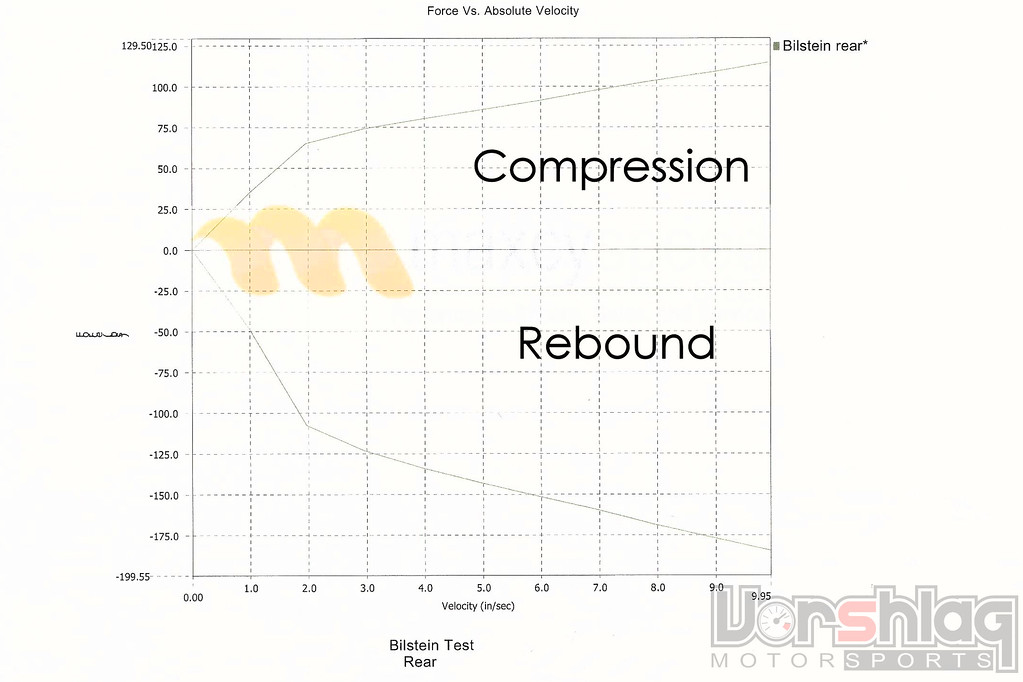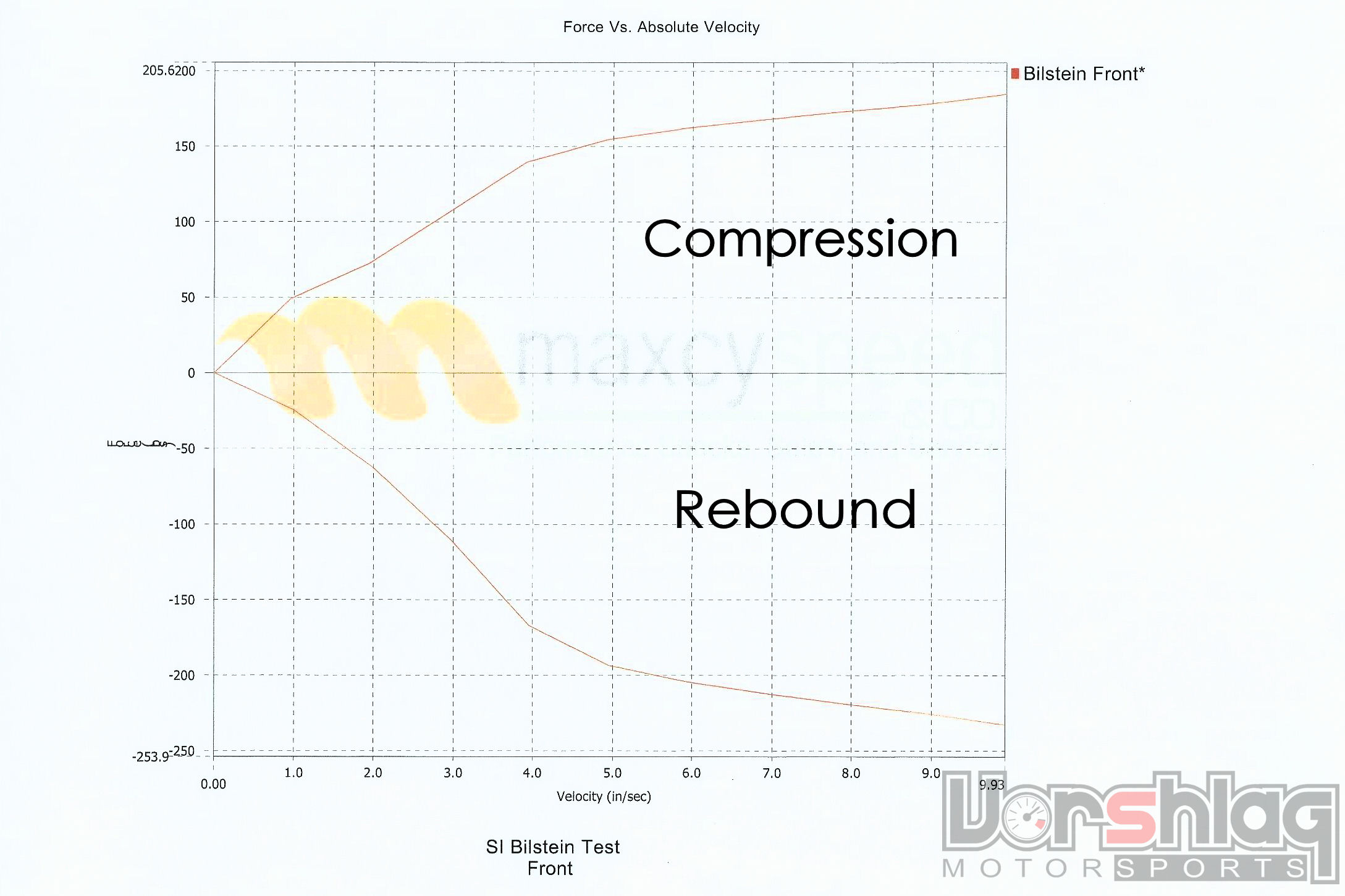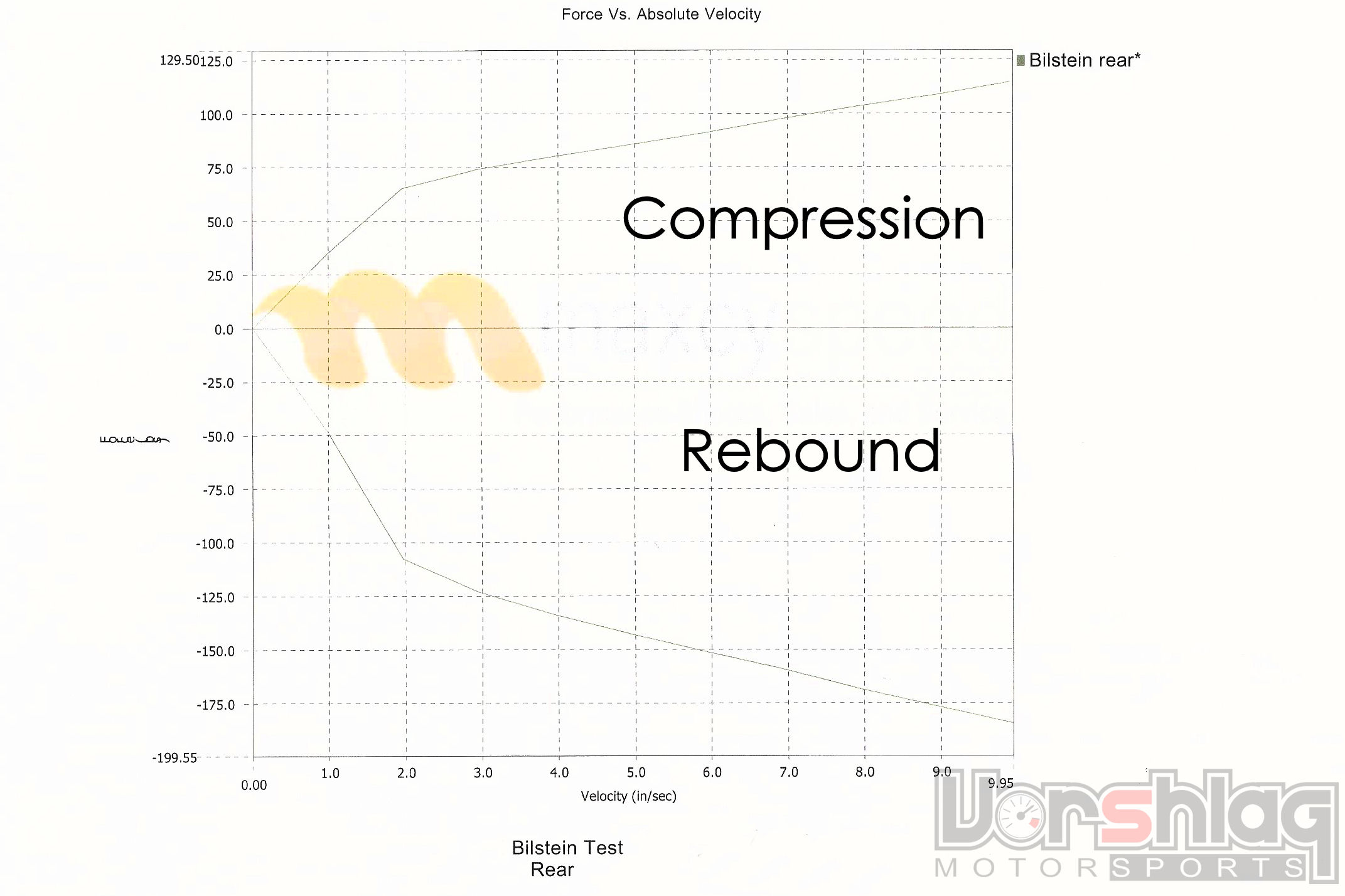Critical damping is in units of force per unit velocity rather than force alone. A typical "lowering spring" might be 200 lb/in and the corner mass something like 1000 lbs / 386.4 in/sec^2 . . . need to work this in consistent inch & lbs units.
https://en.wikipedia.org/wiki/Damping_ratio
Scroll down to the "Definition" section.
You don't necessarily need or want to run at 100% critical damping, either.
Norm
Yep.
What follows, of course, is no substitute for driving a car with them installed. I just want to make that clear for anyone who's listening who might think that by analyzing the damping properties of the Bilsteins, I intend to somehow provide a substitute for driving on them. I have no such intention here.
For an apples to apples comparison against
the Konis, I'll look at the average between 2 and 3 inches/second rebound.
For the Bilstein fronts, that average is right about 50 lbs/(in/sec). This is slightly higher than the very highest damping of the Konis, but not by all that much (the Konis max at 44). It does make a larger difference than one might think in the amount of spring it can properly damp, however.
50 lbs/(in/sec) in the front puts you
past critical damping for the Steeda Sport springs (but barely so), and right at critical for the Steeda Competition springs. The damping is also right at critical for the average critical value for the Ford K springs.
Now, remember that this is for 2-3 inches/second, which is slower than what you'd get for most bumps. The above Bilstein damping rate extends to about 4 in/sec, at which point it drops dramatically (to about 20 lb/(in/sec)). The reason for the digressive valving is likely for ride quality, as well as better adhesion over bumps (the two are very strongly related).
So what of the rear? Well, that's more interesting. The (rather sharp) elbow in the damping curve for the rears is at 2 in/sec! Before that point, the rate is about 60 lb/(in/sec). Between 2 and 3 in/sec, it's at about 15 lb/(in/sec). After that, it's even less (about 10 lb/(in/sec)). I'm really not sure what to make of that. It's
substantially overdamped for most lowering springs (which are in the 190 lb/in range in the rear, which is critically damped at around 39 lb/(in/sec)) until you get to 2 in/sec, and then it's substantially underdamped from there. There may be some handling advantage to that (reduction of turn-in understeer, perhaps?)...
With 50 lb/(in/sec) damping up front, the Bilsteins will be good for rates up to about 525 lb/in up front (assuming a cutoff of 65% critical), at least for handling. With spring rates that high up front, they may prove underdamped for ride.
It would be interesting to know what spring rate combinations work best with the Bilsteins. Based on the relative damping rates, and the fact that the rears go digressive far earlier than the fronts, I suspect the Bilsteins are really intended for setups with notably higher rates up front than in the rear. The mild lowering springs, like the Steedas, are probably at the
low end of what you want to use with the Bilsteins. The Bilsteins will overdamp stock springs for sure, at least up front.
And that tells me that the markets Koni and Bilstein are targeting are actually mildly different. Koni is targeting the stock to mild-mid (400 lb/in up front) lowering spring market, while Bilstein is targeting the mild to medium-high lowering spring market. If you need spring rates that are too high for the Bilsteins to properly damp, then you're really talking about coilover-level rates.
The designs are consistent with that as well. The Konis apparently don't do so well (in terms of longevity) with springs that drop the body too much, while the Bilsteins are intentionally designed with the center of motion lowered under the assumption that you will use them with lowering springs (which means springs with correspondingly higher than stock rates).





